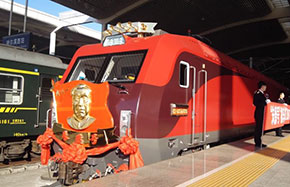How to overcome foreign trade challenges
China is likely to face complicated challenges in foreign trade during the 13th Five-Year Plan (2016-20) period. Internationally, the unbalanced recovery situation and low-speed economic growth will continue, and the global foreign trade pattern will undergo great changes intensifying competition.
China's foreign trade faces two major challenges globally. More developing countries will compete with China in the middle-and low-end product market, and developed countries will make greater efforts to maintain and enhance their strength in the middle-and high-end product industries.
With the Chinese economy embracing the "new normal", its slowing growth is also weakening its advantages in foreign trade.
But China has a sound industrial system and a fast-growing service sector to cope with these challenges. The country is also improving its supply and value chains to make the cooperation between upstream and downstream industries more efficient. Besides, it's focusing on the rapid development of its investment and "go global" strategy.
In this sense, some new characteristics mark China's foreign trade.
First, the growth rate of its export will gradually slow down. Second, the quality of its exports will gradually increase and so will the price. China's trade growth rate is expected to be higher than global level, and China's share in world trade will continuously increase.
Third, China's new advantage in foreign trade will be in technology, brand, quality and service, rather than low prices. China should further optimize foreign trade structure. Foreign trade development should be more coordinated with national economic growth, environmental resource protection, industrial structure adjustment and regional development strategy.
Fourth, the country will more actively participate in the international division of labor and competitiveness. Fifth, the growth of service trade will be higher than that of goods trade. Sixth, exports and imports will be more balanced and the proportion of trade surplus in GDP will gradually reduce. Seventh, foreign trade will contribute more to the promotion of new industrialization, sustainable economic development and people's livelihoods, instead of promoting industrialization, GDP growth and employment.
Therefore, China has to adopt a new strategy and direction based on the "new normal". To begin with, it should cultivate a new engine for growth driven by innovation, which could be its new competitive edge, and establish a new trade and economic system to facilitate free flow of essentials.
To achieve these goals, the country has to take several measures.
For example, it should stabilize the export of labor-intensive goods and increase the export of high- and new-tech products, as well as help expedite the construction of international trade routes, including the Silk Road Economic Belt and the 21st Century Maritime Silk Road, and strengthen institutional cooperation with countries along these routes. It also needs to adopt an import strategy that facilitates the import of advanced technology and key components, and stabilizes the import of energy and resources to meet Chinese people's demands.
Moreover, China has to gain new advantages in global competition and cooperation to promote the transformation and upgrade its labor-intensive industries. Plus, it should improve the trade policy to encourage domestic brands enterprises to become an integral part of the global value chain cooperation. And it should develop the service trade by exploring new frontiers of service trade cooperation.
Lastly, it needs a fair trade environment, for which it should resolve major trade conflicts with developed as well as developing countries through negotiations. It also needs to take measures to stop some countries from taking discriminative actions against it on one pretext or the other, including their attempts to bend the rules of the World Trade Organization to hurt China's foreign trade.
The author is a researcher with Foreign Trade Research Institution, Chinese Academy of International Trade and Economic Cooperation.


















